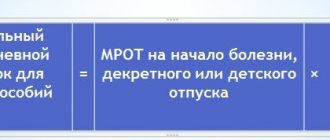Types of vacation
Labor legislation distinguishes two main types of paid rest periods - the main one, mandatory for everyone, and additional types of vacation. The duration of vacation is set at 28 calendar days. All additional days are calculated for special working conditions.
They are provided for the following activities:
- hazardous to health, harmful working conditions;
- special conditions for performing labor (service) functions;
- working in the Far North or equivalent regions;
- where labor is difficult to standardize or is not standardized at all;
- other operating conditions provided for by collective agreements.
For different types of activities, vacations entitled to a citizen can be summed up. If this type of legal vacation is not used immediately (after the end of the year), it is transferred to the next year.
When a citizen decides to terminate further employment relations with the enterprise, on the day of dismissal he is required to pay compensation for all previously due vacation pay. The calculation of such amounts is carried out according to a government-approved methodology based on the average level of income of the worker.
Remember, vacations are calculated based on the employee’s calendar rest periods. There is no maximum value set here.
For information on registration, calculation, and payment of vacation pay in 2021, watch this video:
Calculation of average daily wages
For the purposes of calculating vacation, the SDZP is calculated by dividing the amount of the SPZ by 12 months and by the average number of calendar days in a month (an indicator established by law). Currently, Resolution No. 916 sets the average number of calendar days at 29.3. Thus, when calculating the SDZP, the denominator will be 12 * 29.3 = 351.6 (provided that all 12 months have been worked). However, if a person did not work for some time, then such days are excluded from the calculation of SDZP.
See the Excel calculator for compensation for delayed wages
An example of calculating average daily earnings taking into account sick leave
Ivanov I.I. goes on vacation on January 15, 2021 for 28 calendar days. From February 1 to March 15, 2015 Ivanov I.I. was on sick leave. For the calculation, we take the period from January 1, 2015 to December 31, 2015, for which Ivanov earned 200,000 rubles.
Calculation of days worked is carried out as follows.
- We count the number of months worked in full.
12 months – 2 months (February and March) = 10 months.
- We count the number of days worked in March in accordance with the methodology of Regulation No. 916. To do this, we multiply the average number of months (29.3) by the number of actually worked
days of the month and divide by the number of calendar days in this month.
29,3*(31-15)/31=15,1
- We calculate the total average number of calendar days.
10*29,3+15,1=308,1
We calculate vacation pay:
(200000/308.1)*28=18175.92 rub.
What is included in the calculation of vacation pay in 2018
Considering that the basic part of calculating vacation pay is the sum of all previously made transfers, let’s consider what is included in them.
This will include:
- wages calculated according to the official salary, the established wage scale or the piecework-bonus form of payments for work;
- commissions, percentages of sales volumes included in wages;
- all types of payment for labor, even if they were made not in cash, and not by crediting to a bank card, but by other means;
- remunerations received by deputies, members of election commissions, civil servants, employees of local administrations and municipalities;
- fees due to writers, journalists, workers in the field of art and culture;
- remuneration to authors of various works;
- payments to teaching staff for their main work, as well as all types of additional payments for odd hours, class management, and other teaching activities;
- compensation payments to citizens who have access and perform work with documents constituting state secrets;
- additional payments to the heads of teams, sections, subdivisions, units;
- additional payments received by workers for performing work duties in the evening, at night, and on weekends, if such duration is carried out according to their work schedule;
- territorial coefficients fixed at the federal or regional level that increase the level of wages;
- compensatory additional payments to citizens whose work involves harmful or dangerous conditions;
- bonuses common to all if they are provided for in the company’s wages and are paid on a regular basis;
- other one-time payments provided for by the company’s general remuneration system.
Remember, all payments included in the wage system, as well as those provided for by law, will be summed up on a regular basis in the process of calculating the average income level for vacation pay.
The procedure for calculating sick leave in 2021: the formula and its components
The actual amount of compensation for an employee on a certificate of incapacity for work is calculated using the formula:
FLN = SZ × KST × KO,
Where:
FLN - actual compensation for the certificate of incapacity for work;
SZ - average earnings;
KST - coefficient depending on length of service;
KO - the number of paid sick days.
Each of the formula indicators is determined within the framework of a rather complex algorithm.
In addition, the result of the calculation using the above formula depends on establishing:
- minimum and maximum compensation for a certificate of incapacity for work;
- some limits taken into account when calculating sick leave;
- payments that should not be included in the calculation of sick leave.
These procedures are carried out by an accountant in all scenarios for calculating the amount of compensation for a certificate of incapacity for work.
Calculation of the number of days and amount of vacation pay
The general mechanism for calculating vacation pay due to an employee and the monetary compensation due here is established by the government of the Russian Federation. Labor legislation obliges employers to ensure the actual registration of the main leave.
Its duration must be at least 28 days. This can be done at one time or divided into parts. A citizen can simply replace all other days of paid rest due with monetary compensation.
The division of the main vacation must be carried out in such a way that at one time the employee covers at least half of the rest period. The remaining days can be arranged in agreement with the administration (at least one day at a time). It is optimal if such a vacation is divided into three parts (at the rate of 14 days at once, and then twice for 7 days).
Formulas for calculating vacation pay
The formula for calculating vacation pay due to an employee is quite simple. It is necessary to sum up all payments for the past 12 months, divide this amount by the annual number of working days, and then multiply the result obtained (one-day earnings) by the number of vacation days. This is how a calculation option is performed where there is no need to calculate anything and omit any periods.
In practice, things are somewhat different. During the one-year period of cooperation with the company, anything can happen. Sick leave, vacations without pay, business trips, studies, and other events when the worker retained the average income, which are deducted from the billing periods and make certain adjustments to the calculation methodology.
Calculation of the vacation period
Periods included in the calculation of vacation pay
Salary wages are calculated based on actual accrued amounts and actual hours worked. The period for which the salary is taken into account is one year prior to going on vacation. In this case, the salary of the full 12 calendar months is considered, that is, from the 1st to the last day. For example, if an employee goes on vacation on June 10, 2021, then all payments from June 1, 2015 to May 31, 2021 are included in the calculation of the salary.
Sick leave, maternity leave, days when the employee received salary calculated from the SWP (downtime, strikes, additional days off to care for disabled children, etc.) are excluded from the calculation of the wages.
If the employee has not received a salary in the last 12 months, the salary is calculated based on accruals made over the previous 12 months. In the case where an employee has been working in an organization for less than a year, the payroll period will be the one that he actually worked.
Sick leave periods are included in days of service, i.e. vacation days are accrued for them, but payments made during this time are not taken into account when calculating vacation pay. For example, an employee worked for a full year, but was on sick leave for 2 months. In this case, the employee has the right to 28 paid days of vacation, however, the salary will be considered without taking into account sick leave payments, because payment for them is made partly according to average earnings.
Periods not included in the calculation of vacation pay
The calculation of vacation pay does not include:
- time of absence without good reason, absenteeism;
- vacation at your own expense more than 14 calendar days per year
- decree.
However, this also has its own nuances. For example, if a woman, while on maternity leave, still works part-time, vacation days and wages are calculated for her in the general manner. This is due to the fact that the operating mode and the number of rates do not affect the duration of the vacation. That is, after working part-time for a whole year, a woman will have the right to 28 working days of paid leave. However, this will significantly affect the amount of vacation pay. The fact is that, working part-time, an employee receives a salary that is half as much as he could receive working full-time, so his vacation pay will be approximately 2 times less.
Billing period
The law states that to calculate the average daily income level, a 12-month period of past service activity at the enterprise is taken into account. But in practice, there are situations when, for objective reasons, an employee is going on vacation before the full annual period of work begins. For example, vacation after six months of work, seasonal work, or there were legal grounds for a long break.
In this case, the legislator has determined the ability of the employer to independently set the billing period, which may be less than 12 months. But if the daily income level calculated in this way is less than the annual average, you will have to apply the standard calculation for the year.
Features of calculation for salary increases
Considering that inflation is gradually “eating up” the real level of income of the population, in order to compensate for losses received by citizens and motivate existing personnel, employers periodically increase wages for their employees. Therefore, if this happened in the previous billing period, which is taken as the basis for calculating the average level of daily income, then the calculation itself will differ slightly from the standard one.
Here you will need:
- Determine the salary increase coefficient. This is done by the ratio of the new salary to the old one.
- Calculate the period before the salary increase (in months) and after the increase. Divide the months falling within the year that are the basis for the calculation.
- When calculating, the entire period until the salary increase will need to be indexed by an increasing factor. There is no need to apply such an adjustment after an increase.
If changes occurred while the employee was actually on vacation, only the part that was subject to increase will have to be recalculated.
Remember, the legislator provided that in the process of calculating average income, all real changes in an employee’s salary are taken into account in order to compensate for inflationary losses.
Example of accounting for bonuses when calculating vacation pay
The inclusion of premium amounts in the calculation of the SPP depends on its type (clause 15 of the Regulations). If an employee receives a monthly bonus, then no more than one payment is taken into account for each indicator (per month). For example, if in December an employee received 2 bonuses for fulfilling the work plan, then only 1 bonus will be included in the calculation of vacation pay.
If the period for which the bonus is accrued exceeds the period for which the vacation is calculated, then such a bonus is taken into account only in the amount of the monthly part.
Example. Petrov P.P. goes on vacation on June 1, 2021. In December, Petrov received a bonus based on the results of his work for the year in the amount of 36,000 rubles. Thus, to calculate the SWP, the period from June 1, 2015 to May 31, 2021 is taken. Since the bonus was accrued for the year, and the calculation period includes only 7 months (June-December 2015), only the amounts for these months are taken into account when calculating vacation pay.
Amount, bonuses included in the calculation of vacation pay = 36,000*number of workers. days in June-December 2015/number of workers. days a year.








